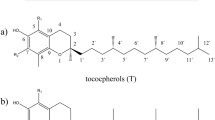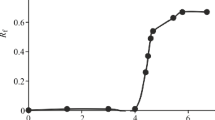Abstract
THE chief problems in the accurate analysis of vitamin D in natural products by physico-chemical methods are: (a) the elimination of large quantities of interfering sterols, vitamin A and other carotenoids; (b) the need to measure minute amounts of vitamin D by a reproducible and specific technique.
Similar content being viewed by others
References
Davidek, J., and Blattna, J., J. Chromatog., 7, 204 (1962).
Kodicek, E., and Ashby, D. R., Biochem. J., 57, xii (1954).
Ritter, F. J., and Martel, J., J. Chromatog., 1, 461 (1958).
Mayer, A., Picard, C. W., and Wokes, F., Pharm. Acta Helv., 33, 603 (1958).
Goldrick, B., and Hirsch, J., J. Lipid Res., 4, 482 (1963).
Nield, C. H., Russell, W. C., and Zimmerli, A., J. Biol. Chem., 136, 73 (1940).
Author information
Authors and Affiliations
Rights and permissions
About this article
Cite this article
OSIYEMI, F. Use of Sudan Black as an Indicator of Vitamin D on Thin-layer Chromatograms. Nature 211, 1192–1193 (1966). https://doi.org/10.1038/2111192b0
Issue Date:
DOI: https://doi.org/10.1038/2111192b0
- Springer Nature Limited
This article is cited by
-
Chemische Vitamin D3-Bestimmung in Lebertran
Fresenius' Zeitschrift f�r Analytische Chemie (1972)





